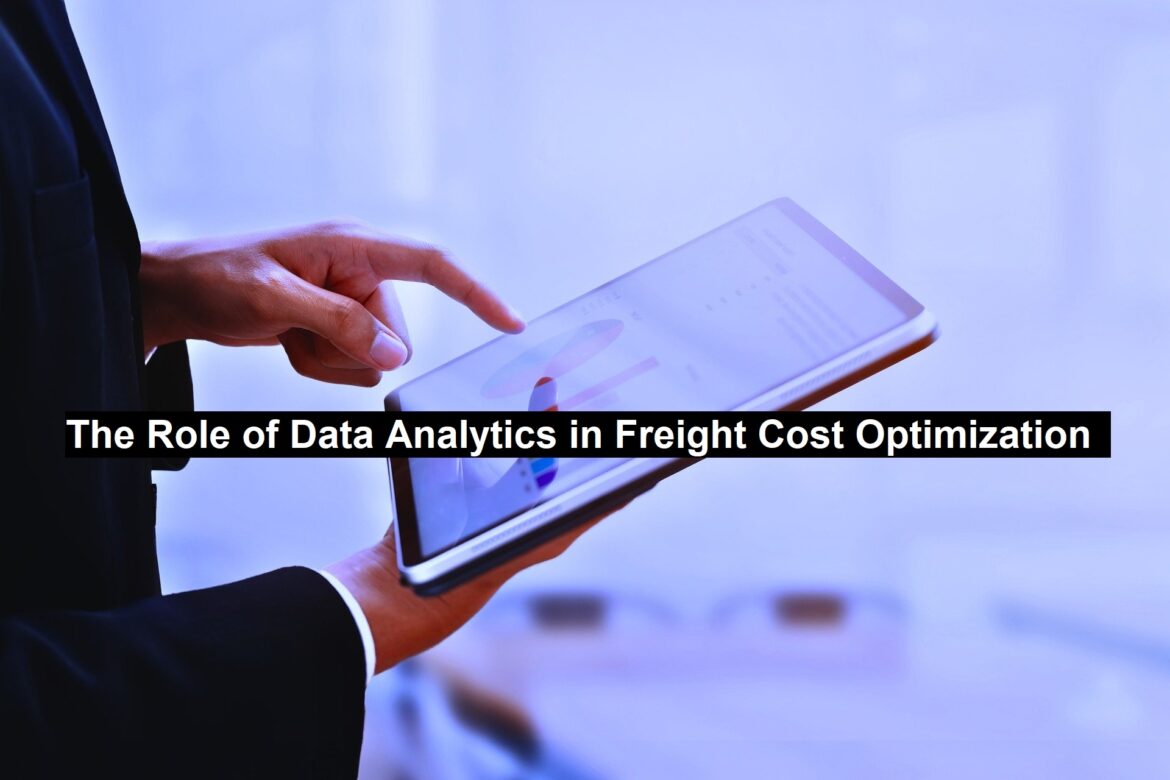In today’s highly competitive global marketplace, businesses are under constant pressure to reduce costs and improve efficiency. One area where substantial savings can be achieved is freight management. The rising costs of transportation, fueled by fluctuating fuel prices, labor shortages, and increasing regulations, make freight cost optimization a crucial strategy for businesses. At the heart of this process lies data analytics—a powerful tool that enables companies to make informed decisions and streamline operations.
In this blog, we’ll explore how data analytics plays a pivotal role in freight cost optimization, the tools and techniques involved, and how businesses can harness its power to achieve operational excellence.
Understanding Freight Cost Optimization
Freight cost optimization involves reducing transportation expenses without compromising service quality or delivery timelines. It requires a strategic approach to manage logistics effectively, balancing cost reduction with customer satisfaction.
Key areas of focus include:
- Route planning and optimization.
- Carrier selection and contract negotiation.
- Load consolidation.
- Minimizing empty miles.
- Leveraging technology for real-time tracking and analysis.
By using data analytics, companies can address these areas with precision, uncovering opportunities for cost savings that were previously hidden.
Read: Top Finance App Ideas for Startups to Implement in 2024
The Importance of Data Analytics in Freight Management
Data analytics transforms raw transportation data into actionable insights. By analyzing large datasets from multiple sources, businesses can identify patterns, predict trends, and make smarter decisions. Here’s why it’s indispensable in freight cost optimization:
1. Uncovering Cost Drivers
Freight costs are influenced by numerous factors, including fuel prices, delivery distance, cargo weight, and carrier fees. Data analytics helps businesses identify the primary cost drivers, enabling targeted interventions to minimize expenses.
2. Improving Route Efficiency
Advanced algorithms analyze historical and real-time data to identify the most cost-effective routes. Optimized routing reduces fuel consumption, minimizes delivery delays, and enhances overall efficiency.
3. Enhancing Load Consolidation
Underutilized trucks lead to higher costs per shipment. Data analytics enables businesses to consolidate shipments effectively by matching loads with available capacity, ensuring trucks are fully utilized.
4. Streamlining Carrier Selection
Choosing the right carrier is critical for cost efficiency. Analytics tools evaluate carrier performance, rates, and reliability, helping companies negotiate better contracts and ensure high service levels.
5. Forecasting Demand
Businesses can predict shipping volumes and allocate resources appropriately by employing demand forecasting based on historical and seasonal data. Accurate forecasts prevent overbooking and underutilization, saving costs.
Key Techniques and Tools in Freight Cost Optimization
The success of data analytics in freight management relies on a combination of techniques and tools. Below are some commonly used methods:
Techniques
1. Descriptive Analytics
Descriptive analytics focuses on understanding past performance. It helps businesses identify trends, such as peak shipping seasons or recurring delivery issues, to refine future operations.
2. Predictive Analytics
Predictive analytics forecasts future results by utilizing historical data. For example, it can predict fuel price changes, potential delays, or carrier performance, enabling proactive measures.
3. Prescriptive Analytics
Prescriptive analytics recommends the best actions to achieve desired outcomes. For instance, it can suggest optimal routes or the most cost-effective carriers for specific shipments.
Tools
1. Transportation Management Systems (TMS)
TMS platforms integrate with data analytics tools to provide end-to-end visibility into freight operations. Features include load planning, carrier selection, and performance tracking.
2. Business Intelligence (BI) Tools
BI tools like Tableau and Power BI visualize complex data, making it easier to interpret trends and identify inefficiencies in freight operations.
3. Machine Learning Models
Machine learning models process large datasets to uncover patterns and anomalies that traditional methods might miss. These models continuously improve with new data, enhancing accuracy.
Real-World Applications of Data Analytics in Freight Cost Optimization
1. Optimized Route Planning
A multinational retailer used data analytics to optimize its delivery routes. By integrating traffic patterns, delivery windows, and fuel costs into its TMS, the company reduced transportation costs by 15%.
2. Carrier Performance Analysis
A manufacturing company evaluated its carriers using analytics, identifying underperforming providers. By renegotiating contracts and switching to more reliable carriers, the company saved millions annually.
3. Dynamic Pricing Models
E-commerce businesses often face fluctuating freight costs due to variable demand. Using predictive analytics, one online retailer implemented dynamic pricing models, ensuring competitive shipping rates while maintaining profitability.
4. Load Consolidation in Warehousing
A logistics provider used machine learning algorithms to consolidate loads effectively, reducing the number of trips needed to deliver goods. This initiative cut fuel expenses by 20% and decreased carbon emissions.
Benefits of Data-Driven Freight Cost Optimization
1. Cost Reduction
Analytics enables precise cost control by identifying inefficiencies, optimizing routes, and negotiating better contracts with carriers.
2. Enhanced Decision-Making
Data-driven insights empower managers to make informed decisions based on factual evidence rather than intuition.
3. Increased Operational Efficiency
Streamlined processes reduce delays, eliminate bottlenecks, and enhance the overall efficiency of freight operations.
4. Improved Customer Satisfaction
By ensuring timely and cost-effective deliveries, businesses can meet customer expectations and build loyalty.
5. Sustainability
Optimized freight operations result in reduced fuel consumption and lower greenhouse gas emissions, contributing to sustainability goals.
The Future of Data Analytics in Freight Management
As technology evolves, the role of data analytics in freight cost optimization will continue to grow. Emerging trends include:
- AI-Powered Automation: Artificial intelligence will automate tasks like load planning and carrier selection, further reducing costs.
- Blockchain Technology: Blockchain can improve transparency and efficiency in freight management, ensuring accurate data tracking.
- Predictive Maintenance: Using IoT data, predictive maintenance will minimize vehicle downtime and associated costs.
- Sustainability Analytics: Advanced tools will help businesses optimize freight operations while meeting environmental standards.
Conclusion
Data analytics has transformed the way businesses approach freight cost optimization. By leveraging tools like predictive analytics, TMS platforms, and IoT systems, companies can achieve significant cost savings, improve efficiency, and enhance customer satisfaction. Despite the challenges, the benefits of adopting a data-driven approach to freight management far outweigh the initial investment.
Incorporating data analytics into your freight operations is no longer optional—it’s a necessity in today’s fast-paced, cost-conscious environment. Embrace the power of analytics to gain a competitive edge and unlock the full potential of freight cost optimization.
Author’s Bio:
Steve Williams is a qualified content writer with experience in writing on a variety of subjects. He has written a lot of content on freight cost optimization and small business shipping solutions as well.








